Written by Admin and published on https://www.aces.edu/blog/.
Today, about a third of the loblolly and slash pine trees in the Southeastern U.S. suffer from a fungal disease called fusiform rust. For this reason, it’s a common problem seen by tree care specialists, tree services, and ISA certified arborists . Although this tree disease does not result in a significant number of tree deaths, a severely affected plant can succumb to this type of fungal infection. More commonly, the presence of this disease can reduce the value of pine timber.
Watch this video to learn more about this tree disease. With the implementation of mass production of pine wood, fusiform rust went from being a rare problem to one that appeared consistently within pine stands. This fungal disease is still typical among pine trees and is more common within intensively managed areas. For stands that are significantly affected, thinning the area through tree removal can be beneficial.
Table of Contents
Managing Fusiform Rust on Loblolly and Slash Pine in Forest and Landscape Settings
In the 1940s, the occurrence of fusiform rust (Cronartium quercuum f.sp. fusiforme) was so rare that forest pathologists had not yet developed an interest in the tree disease. The development of the pulp and paper industry in the 1950s, however, spurred the use of plantation forestry throughout the South. With the extensive planting of susceptible pine and an aggressive fire suppression policy that increased the oak abundance, the disease became widespread throughout the southern United States in the 1970s. Today, despite spending hundreds of millions of dollars to minimize its impacts, fusiform rust remains the most economically important disease of pine in the southern United States.
Although the fungus infects all southern pine species from Texas, east to Florida, and north to Maryland, it is most severe on slash (Pinus elliottii) and loblolly (P. taeda) pine. On the 13.9 million acres of southern forest land, an estimated 10 percent of the trees have potentially lethal cankers. Since the 1960s, genetics programs have worked to select rust resistant varieties, and pathologists have sought the best ways to deploy the resistance by defining rust hazard areas across the South. These efforts appear to be working and long-term forest health monitoring plots now indicate that disease incidence and severity are decreasing throughout the host range. In spite of these improvements, fusiform rust still costs the forest industry millions of dollars annually.
Life Cycle
Fusiform rust is caused by a fungus that produces five different spore stages and requires both an oak and a pine tree to complete its life cycle (Figure 1).
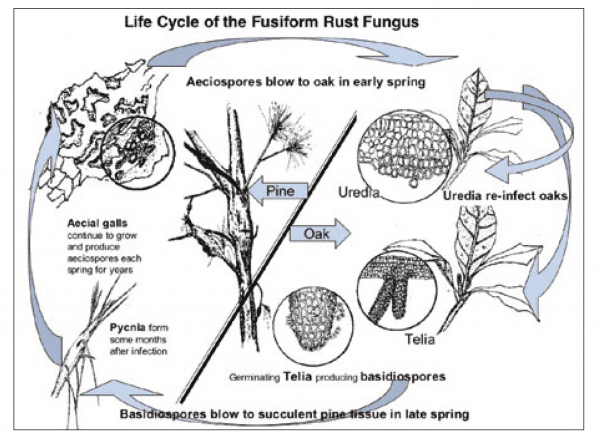
Figure 1. Life cyle of fusiform rust
The most conspicuous stage in the life cycle is the orange-colored aeciospores that appear on pine galls. This occurs at the same time as the first flush of spring oak leaves (Figure 2). Aeciospores, if windblown to succulent oak leaves, establish infections that within a few days produce orange pustules (uredia) from which urediospores that reinfect oak leaves are produced. This spore stage builds up fungal inoculum for the next spore stage that appears a few weeks after the initial oak infection.
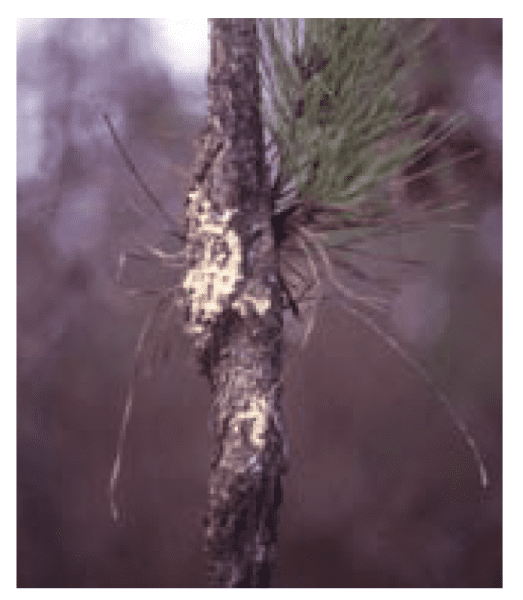
Figure 2. Spindle-shaped gall with orange-colored aeciospores.
From each uredial infection on an oak leaf, the fungus produces a telia and the fourth spore stage, the teliospore (Figure 3), which germinates to produce basidiospores. The basidiospore is the threat to pines. Within a few months, if the spore is wind blown to succulent pine tissue and environmental conditions are adequate (24 hours of temperatures between 60 and 80 degrees F and relative humidity of 97 to 100 percent), a swelling or gall will start to develop at the site of infection.
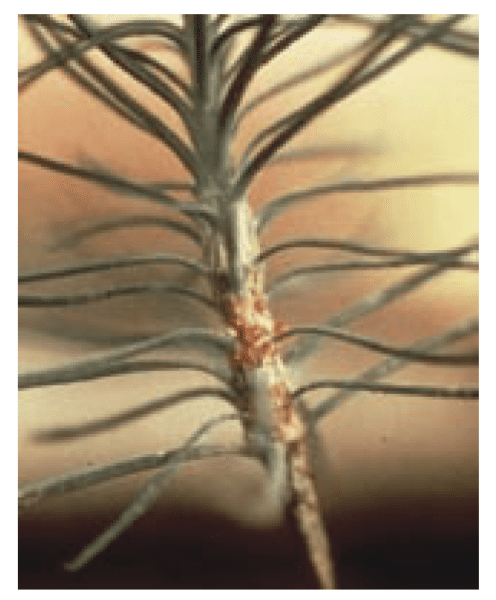
Figure 4. Immature gall producing pycia that may cross fertilize the infection.
A few months after basidiospores infect pine, another spore stage is produced, pycniospores (Figure 4). After cross fertilization within the pycnia, pyciospores establish the perennial gall that can produce the orange aeciospores again each spring for decades.
Identification
The fungus produces spindle-shaped galls on branches or main stems of pines. The galls are elongated with deep fissures. In the early spring, these galls produce orange-colored spores in bladderlike blisters (Figure 2). Many galls, which appear in late March to early April each year, may be present on a tree making the infection conspicuous. These yellow spores are no threat to the pine but rather serve to infect the alternate host, an oak. The most commonly infected oak species in Alabama are water, laurel, willow, and southern red. Oaks in the white oak group are rarely infected. Oak leaves become infected when the first flush is expanding in the early spring. On the underside of infected oak leaves, the fungus produces fine, inconspicuous hairlike structures (Figure 3). Severely infected oak leaves may have yellow spots but symptoms on oak leaves are usually not noticed.
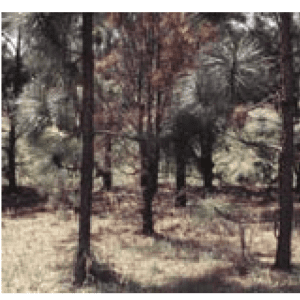
Figure 5. Loblolly pine with a lethal infection that appears to have occurred in the first year after out planting.
Fusiform rust infection of young pine seedlings is usually lethal within a few years. On larger trees, infection can cause multiple shoots that give the tree a bushy appearance (Figure 5). Older trees that survive with main-stem infections may develop a sunken canker (Figure 6), which causes a weak, distorted stem that can break in strong wind. Slash pine seems more susceptible to stem breakage than loblolly (Figure 7).
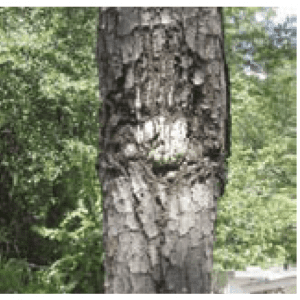
Figure 6. An old perennial gall on landscape tree. This increases chance for wind breakage.
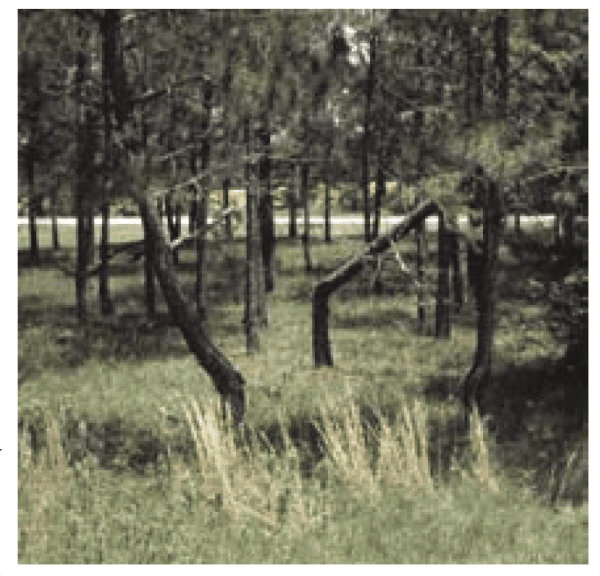
Figure 7. Wind breakage of stems weakened by rust galls. Slash pine is more prone to breakage than loblolly pine.
Management
In forest-tree nurseries, seed treatments and timely foliar applications of a systemic fungicide have resulted in nearly 100 percent control of fusiform rust. However, once out of the nursery, fungicides are not economical and trees must rely on resistance and perhaps luck to avoid severe infections. Both slash and loblolly pine genetic improvements have increased rust resistance. Most pine seedlings available today are more rust resistant than were the seedlings planted 30 years ago.
Landowners should make sure that the loblolly and slash pine seedlings to be planted on their lands are disease free. Make sure the seedlings were treated for fusiform rust in the nursery, and, if possible before planting, examine seedling stems for slight swelling along the stem. This swelling strongly indicates a fusiform rust infection, and seedlings infected in the nursery will not survive more than a year or two in the field. If a stand is to be planted in an area with high incidence of fusiform rust (Figure 8), landowners should consider planting either rust resistant families of loblolly or slash pine or more resistant species such as longleaf or shortleaf pine. Rust resistant families of loblolly or slash pines are available from many forest-tree nurseries. Contact your state forestry commission or county Extension office for a list of nurseries that supply resistant pine material best suited for your area.
Infection after stand establishment can be minimized through various silvicultural options. One option is to reduce the site preparation necessary for stand establishment. Extensive site preparation and fertilization at the time of establishment tend to increase early pine growth, normally a desired objective, at a time when most infections will involve the tree’s main stem. Increased infection is due to increased succulent pine tissues (stems and needles) for a longer time when the basidiospores are present. If landowners fertilize after the pine trees are larger, typically 8 years old, fusiform rust infections tend to be farther away from the main stem and are less likely to cause main-stem damage.
In older stands, trees with main-stem rust cankers should be preferentially removed during any stand management thinning to reduce stem breakage and increase the growth of the neighboring uninfected trees. Trees with galls on the branches pose little or no threat to the stand and should be left to rotation. Main-stem infections pose a greater threat in landscape settings than they pose in forest situations. Such galls predispose their stems to breakage and should be removed if such breakage poses a threat to property. Slash pine is much more prone to breakage than is loblolly pine. In landscape settings, galls within 12 inches of the main stem on smaller trees can be pruned out to prevent the fungus from growing into the main stem. Branch infections more than 12 inches from the main stem typically pose no threat to the tree and can be left alone. Also, if infections have not resulted in a sunken canker, main-stem infections can be successfully pruned out if less than 50 percent of the circumference is affected. This is done by carefully removing the bark encompassing the galls and letting the healthy, noninfected bark callous over the removed area. In this way, the fungus is removed from the stem and the tree is able to compartmentalize the wound and eventually heal itself.
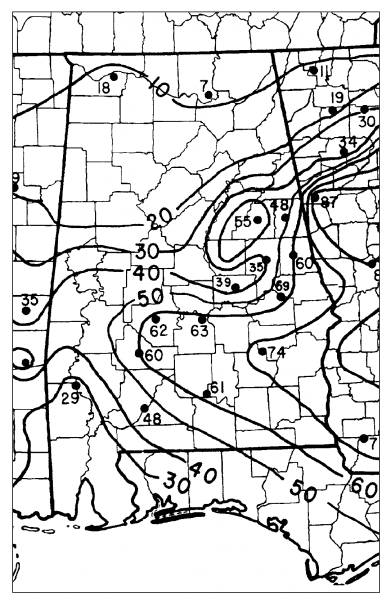
Figure 8. Percentage of trees infected with fusiform rust in 8- to 12-year-old loblolly pine plantations (from Squillance 1976).
Summary
Loblolly and slash pine plantations intensively managed in the southern United States are susceptible to fusiform rust. Factors that increase infection include early rapid tree growth, warm moist conditions, and the presence of the alternate host. Minimizing site preparation; using resistant, disease-free planting stock; and delaying adding fertilizer until age 8 will help minimize infection in high-hazard areas. When thinning infected stands, stems with main-stem infections should be removed first because they have increased risk to wind breakage and reduced value. Those trees with only branch infections can be left alone. In landscape settings, main-stem infections on larger slash pine trees may pose a risk to property. On larger trees, branch infections can be left alone because they pose little threat of infecting the main stem. Also, homeowners may consider pruning out main-stem infections to remove the infection and save the tree.
Original post here https://www.aces.edu/blog/topics/forestry/managing-fusiform-rust-on-loblolly-and-slash-pine-in-forest-and-landscape-settings/.
